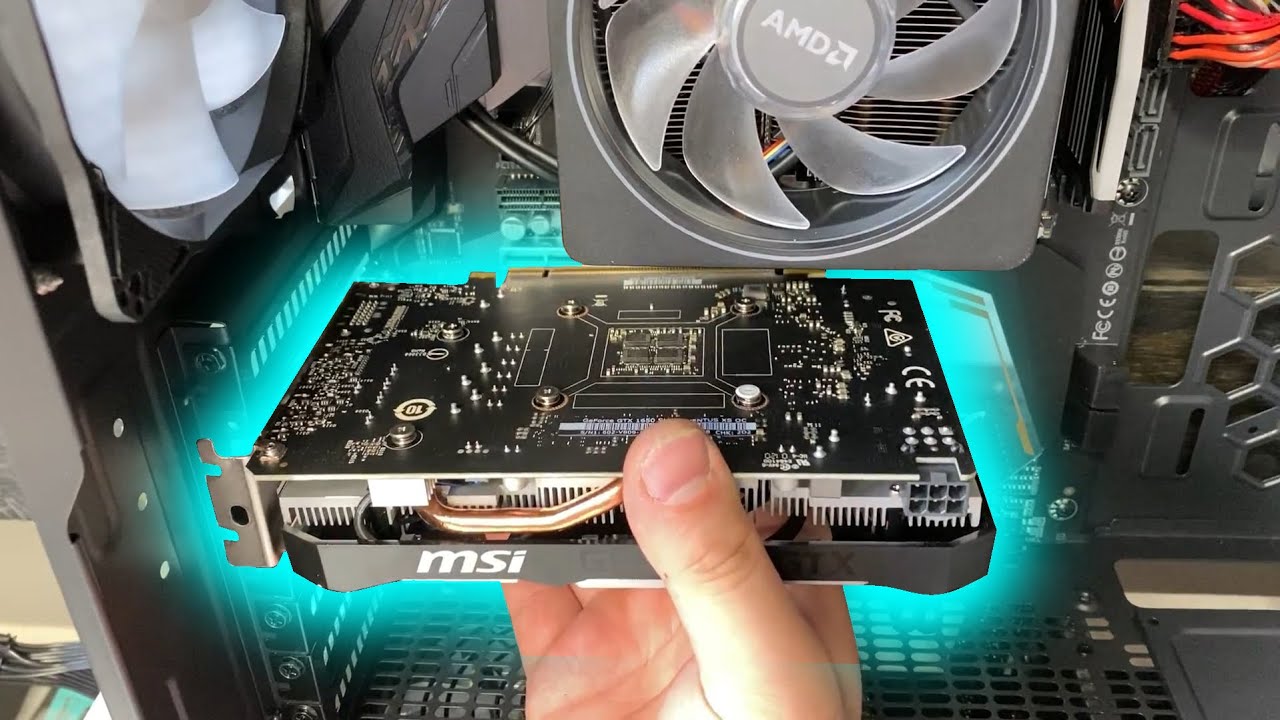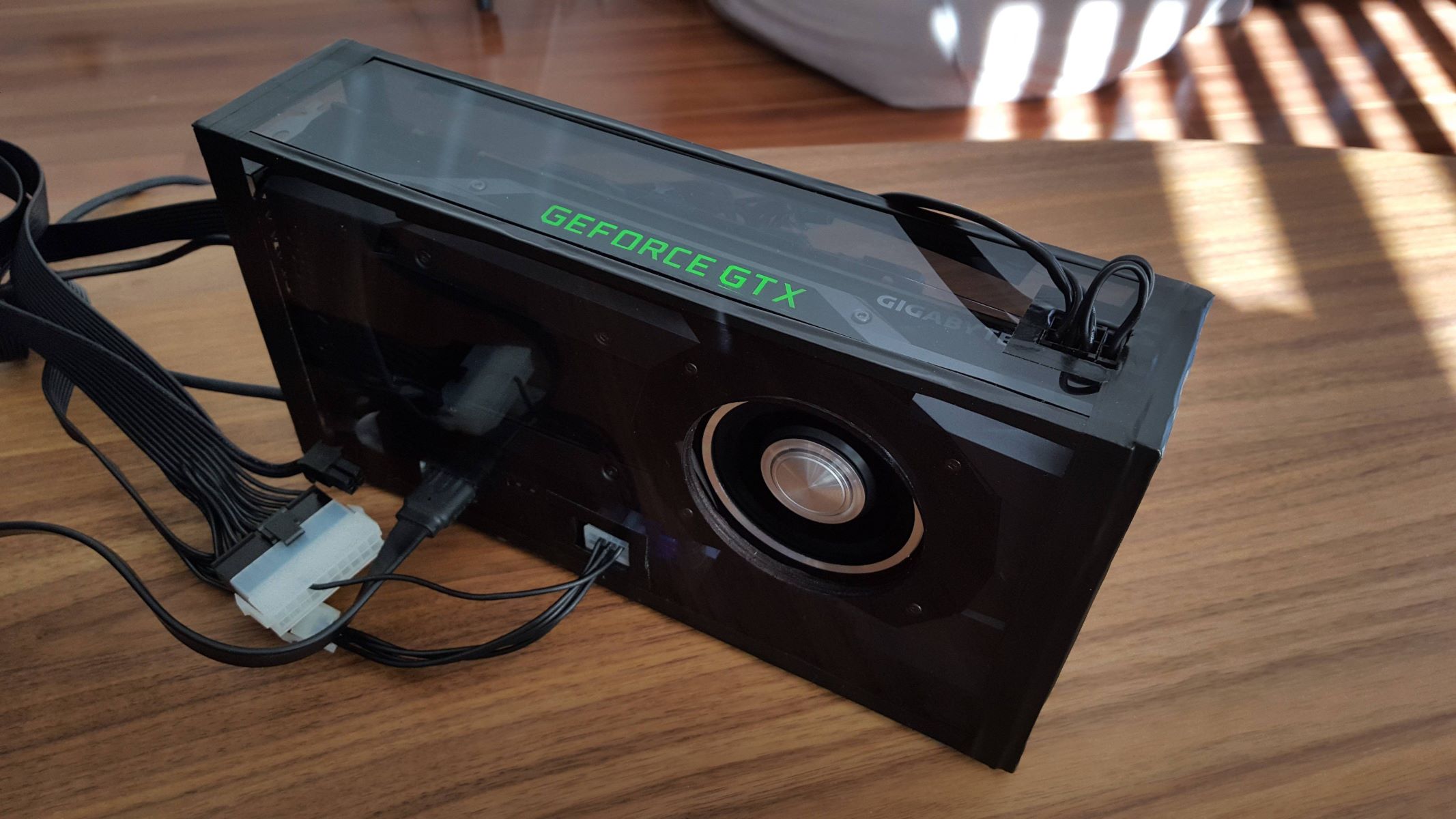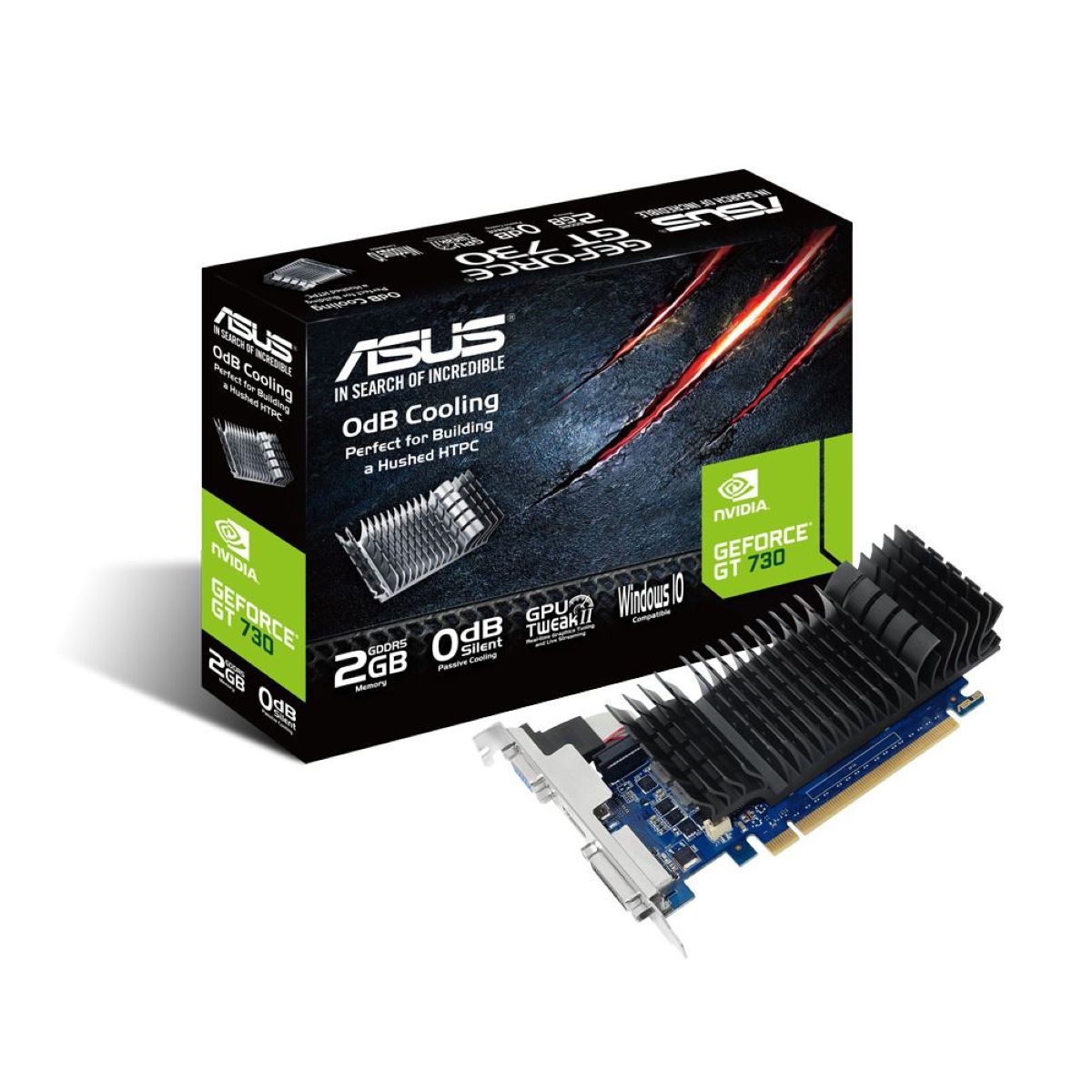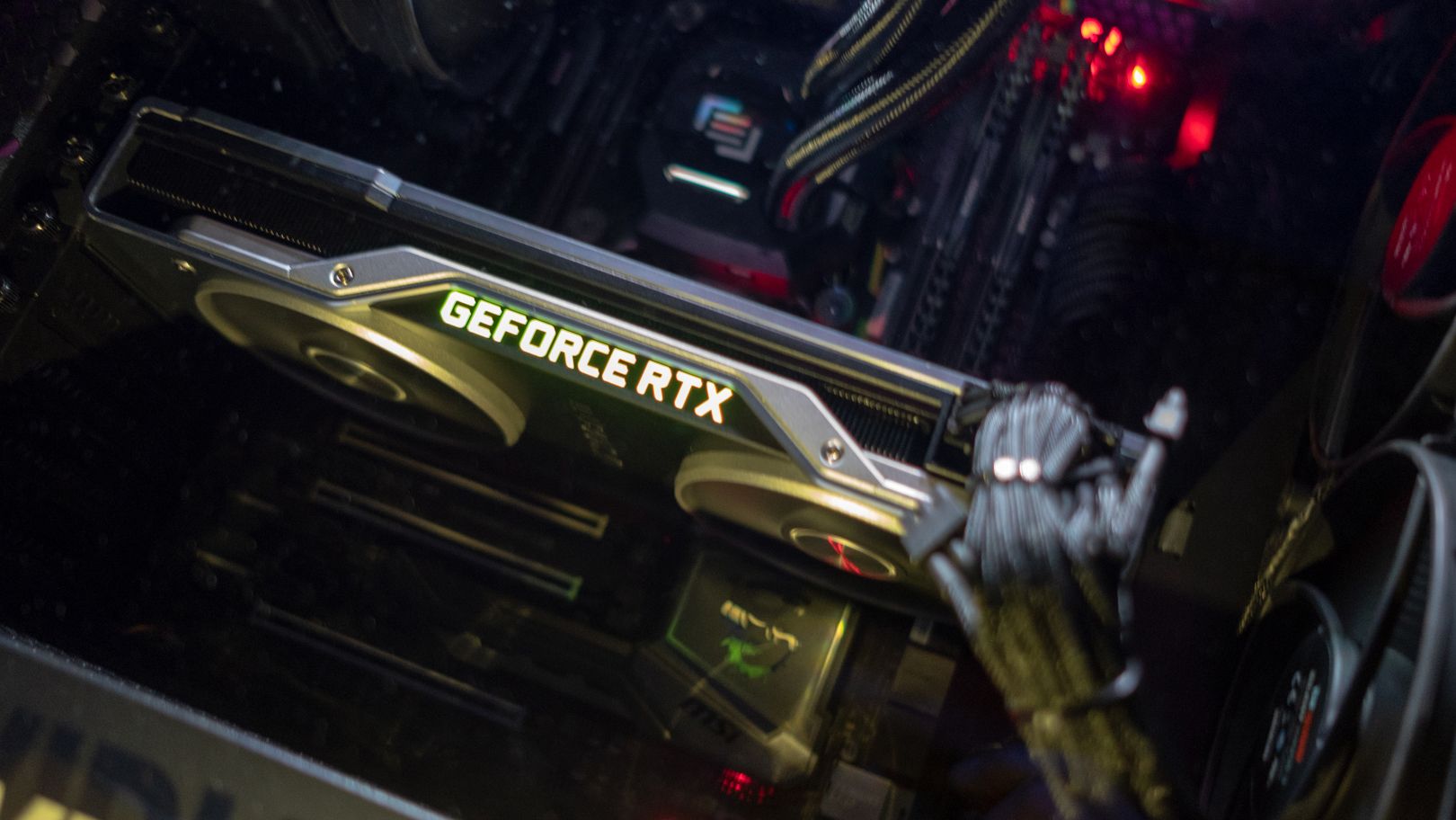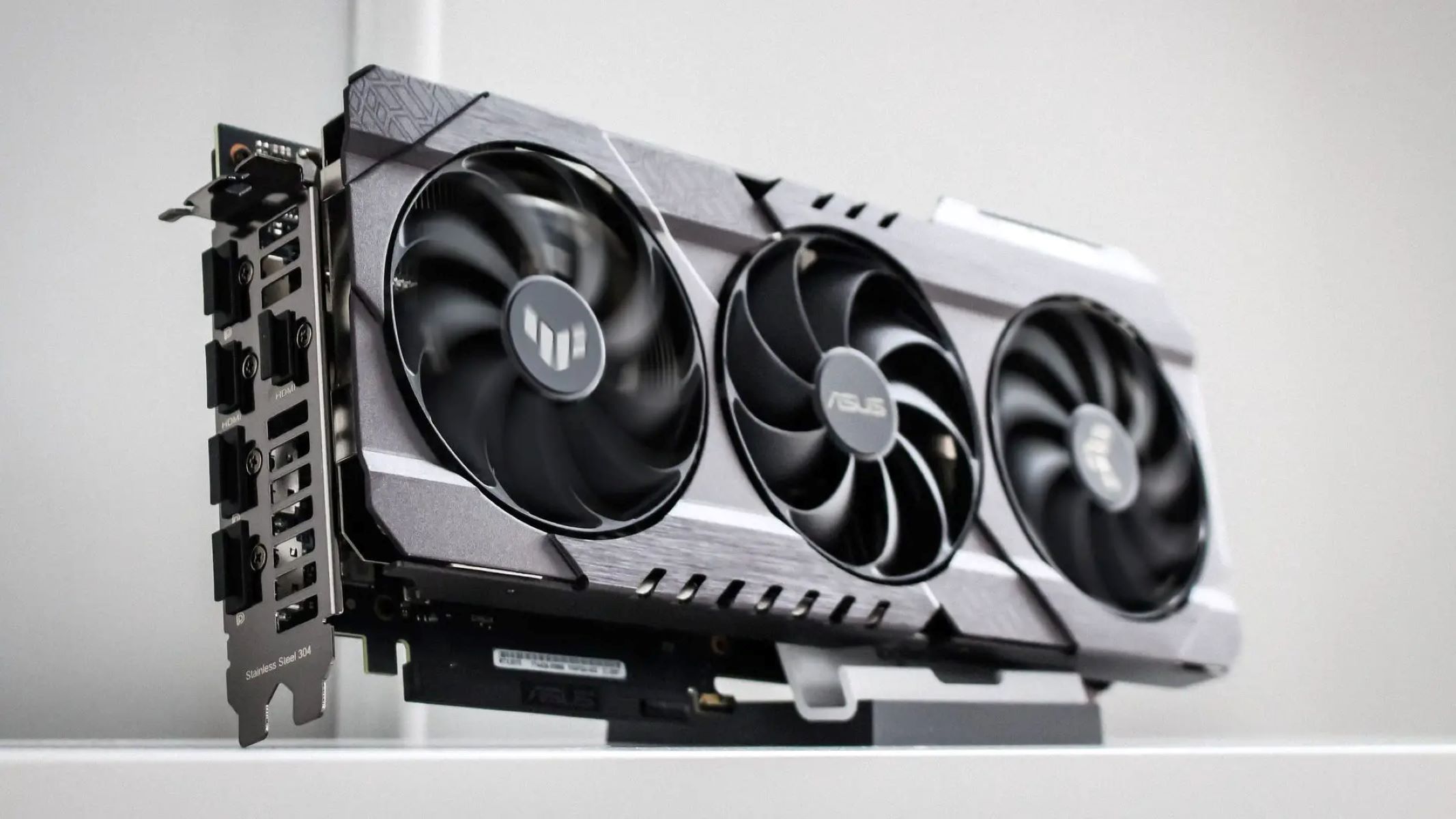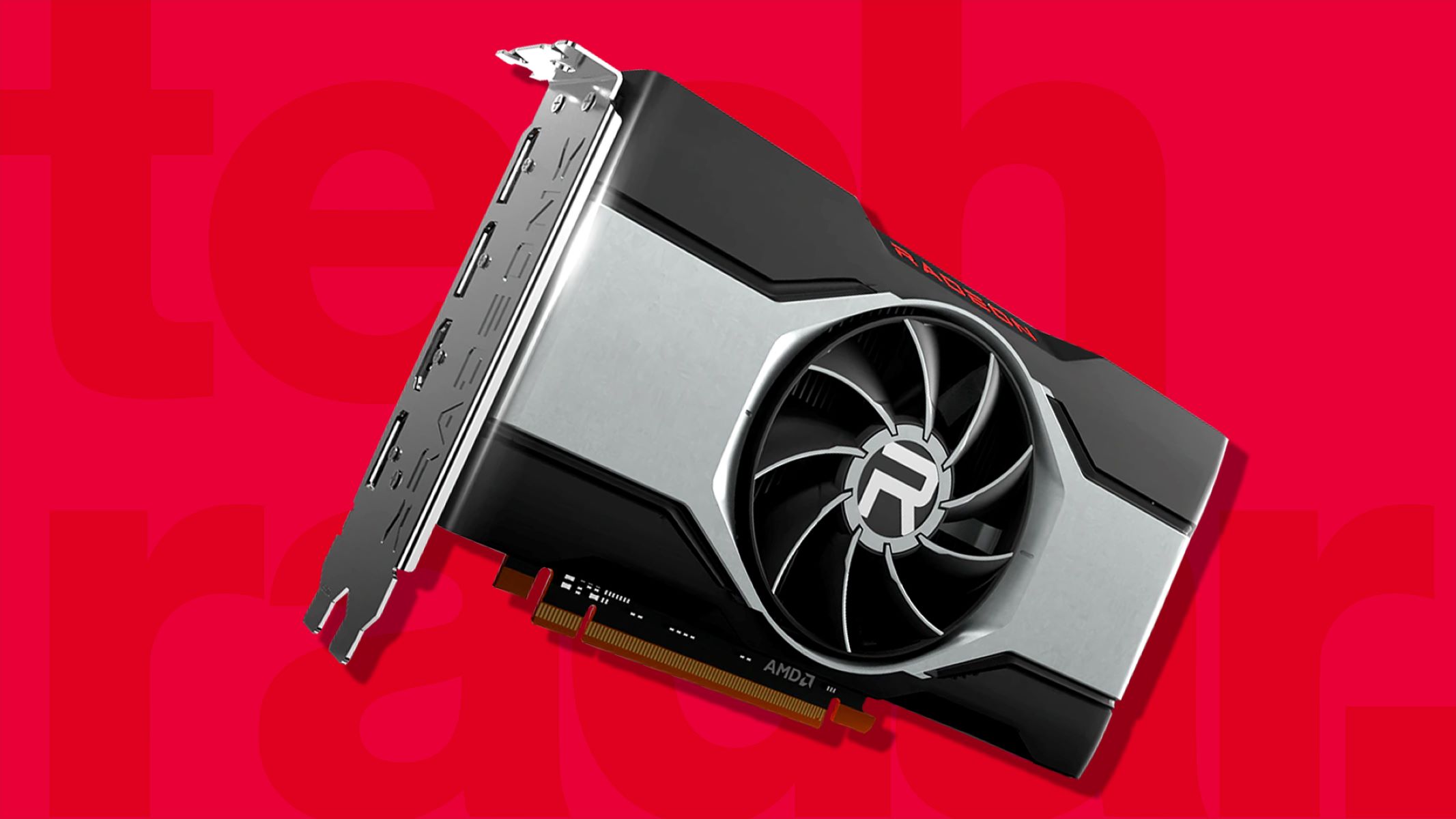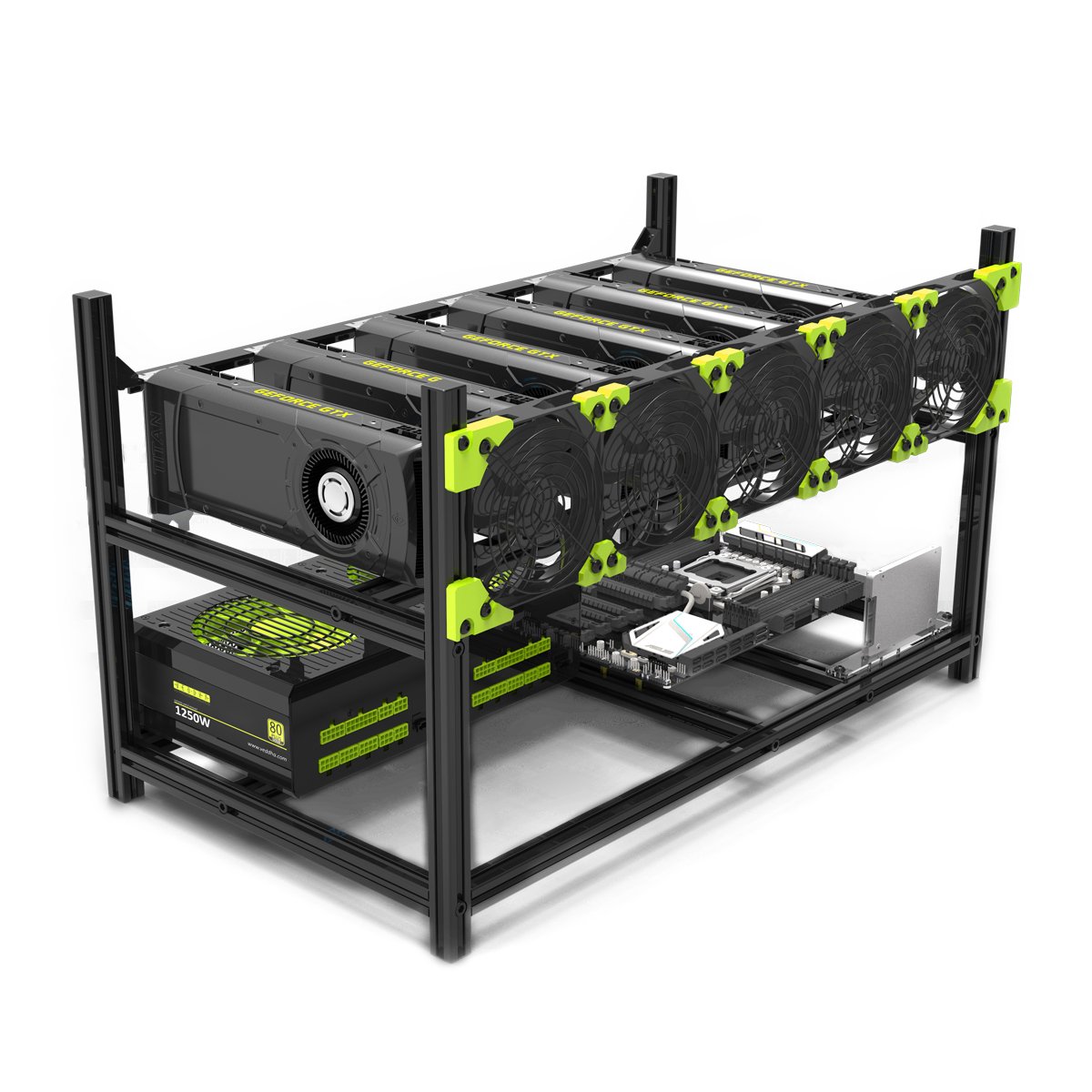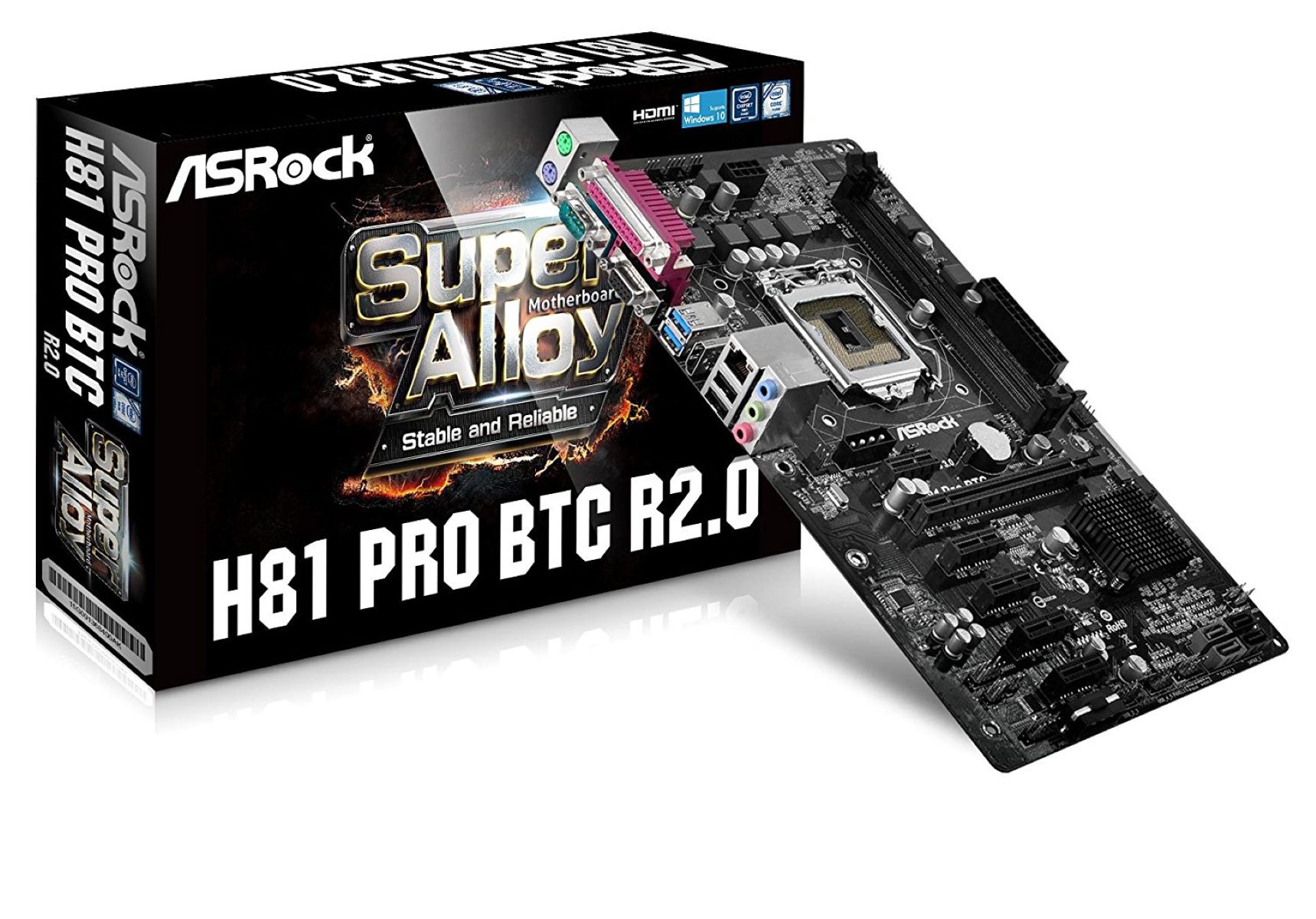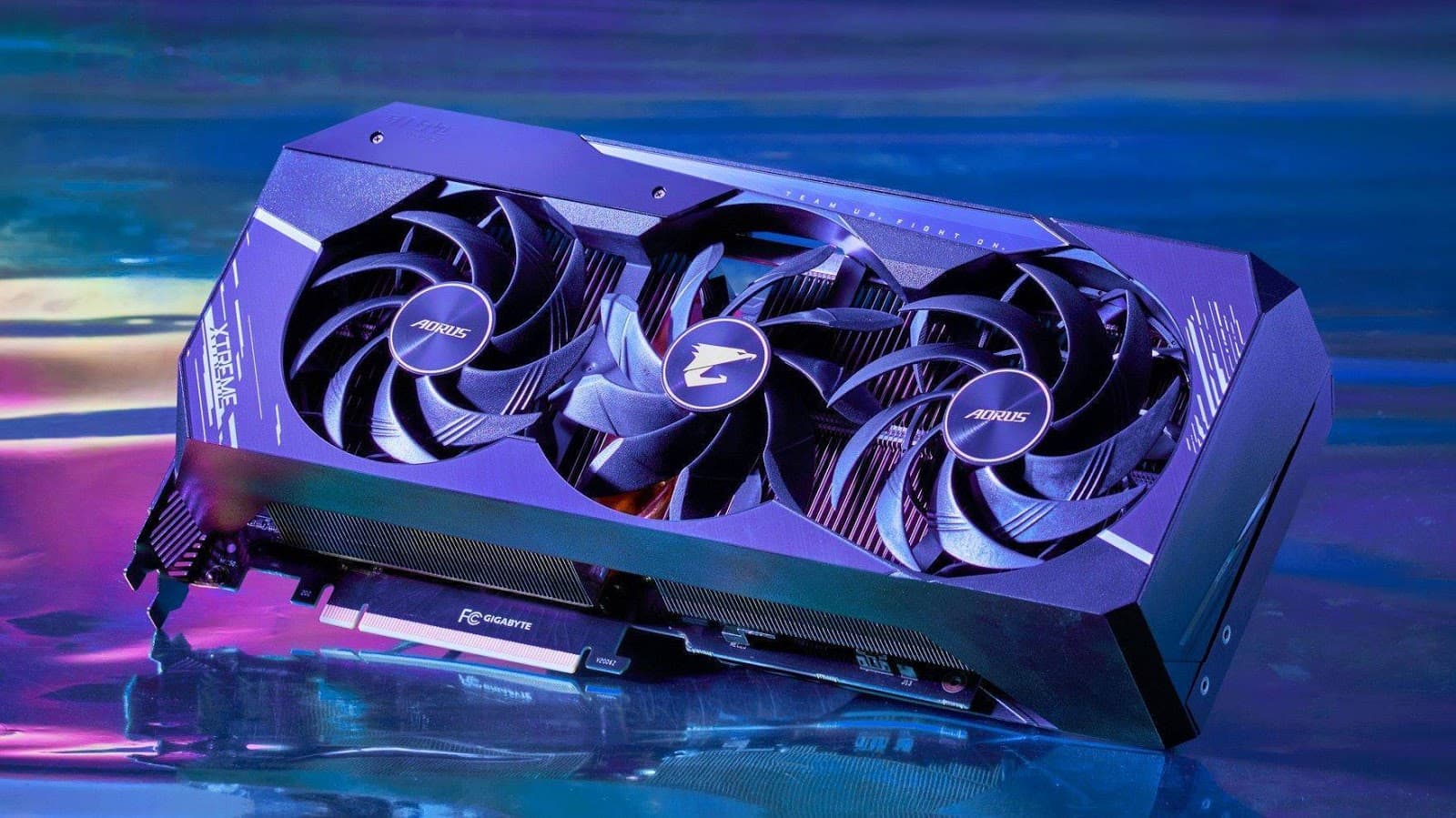Introduction
Welcome to the exciting world of computer graphics! Have you ever wondered how those stunning visuals in video games, movies, and animations are created? It’s all thanks to the incredible power of the Graphics Processing Unit, commonly known as the GPU. In this article, we will explore what a GPU is, how it works, and the various roles it plays in a computer system.
A GPU is a specialized electronic circuit that is designed to handle and accelerate the processing of graphics and images. It is distinct from the Central Processing Unit (CPU) which is responsible for general-purpose computations and running software applications. GPUs are highly optimized for parallel processing, making them ideal for rendering complex graphics, performing intensive calculations, and powering multimedia applications.
So, how does a GPU work? Unlike a CPU that focuses on executing instructions sequentially, a GPU is built to process multiple tasks simultaneously. It consists of thousands of cores, also known as shaders, that work together to perform computations in parallel. This parallel architecture allows the GPU to handle large amounts of data and perform calculations at lightning-fast speeds. Additionally, GPUs are equipped with dedicated memory to store and manipulate graphic data efficiently.
One of the primary functions of a GPU is processing graphics. It takes the raw data from the CPU and transforms it into stunning visuals that you see on your screen. The GPU’s ability to handle complex shading, lighting, and geometry calculations enables it to render realistic 3D graphics in real-time. Whether it’s traversing vast open worlds or engaging in intense fast-paced battles, the GPU plays a crucial role in delivering immersive and visually appealing gaming experiences.
While gaming is undoubtedly one of the most popular applications of GPUs, they also serve various other purposes. GPUs have become increasingly important in fields such as machine learning and artificial intelligence, where they excel at performing complex mathematical computations required for training and inference tasks. In fact, GPUs have revolutionized these fields by significantly reducing the time required for processing data and training sophisticated deep learning models.
Another vital role of the GPU is video encoding and decoding. When you stream a video, the GPU works tirelessly to compress and decompress the video data, ensuring smooth playback and efficient transmission over networks. This capability is particularly important for video editing, live streaming, and video conferencing applications, where real-time encoding and decoding are crucial.
Finally, GPUs have gained popularity in the world of cryptocurrency mining. Cryptocurrencies like Bitcoin and Ethereum rely on complex mathematical algorithms that can be efficiently solved using GPUs’ parallel computing power. As a result, dedicated GPUs have become the go-to choice for mining enthusiasts looking to make a profit by contributing their computational resources to secure and validate transactions on blockchain networks.
As you can see, the GPU plays a pivotal role in modern computing, powering the visual and computational demands of various applications. Throughout this article, we will delve further into the fascinating intricacies of GPUs and explore the specific tasks they perform in greater detail.
What is a GPU?
A GPU, or Graphics Processing Unit, is a specialized electronic circuit that is designed to handle and accelerate the processing of graphics and images on a computer system. While the Central Processing Unit (CPU) is responsible for general-purpose computations and running software applications, the GPU is specifically designed for graphics-intensive tasks.
Modern GPUs are highly efficient and can perform massive amounts of calculations simultaneously. They consist of thousands of cores, also known as shaders, that work together in parallel to execute instructions. This parallel architecture allows the GPU to handle complex tasks related to graphics rendering, image processing, and computational tasks involved in various applications.
One key characteristic of GPUs is their ability to perform calculations simultaneously on multiple data sets. This parallel processing capability makes them ideal for tasks that require handling large amounts of data in real-time, such as rendering complex 3D graphics, running high-definition videos, and performing intense calculations in scientific simulations or machine learning algorithms.
In addition to their parallel processing power, GPUs have specialized memory known as Graphics Memory, or VRAM. This dedicated memory allows the GPU to store and manipulate data related to graphics processing efficiently. It helps in reducing data transfer bottlenecks between the GPU and the system’s main memory, resulting in improved performance and faster rendering of graphics.
Gaming is one of the most common applications where GPUs are extensively used. They are responsible for rendering high-resolution and realistic 3D graphics in video games, handling complex shading and lighting effects, and ensuring smooth and immersive gameplay experiences. The parallel architecture of GPUs allows them to handle the vast number of calculations required to render detailed graphics at high frame rates.
In addition to gaming, GPUs find applications in various fields such as computer-aided design (CAD), animation production, virtual reality (VR) and augmented reality (AR) experiences, scientific research, data visualization, and more. With their powerful parallel processing capabilities, GPUs enable professionals to work with large datasets, simulate complex phenomena, and create visually stunning and interactive content.
It’s worth noting that GPUs can be found in different forms, ranging from discrete graphics cards that can be added to a desktop computer to integrated GPUs that come embedded as part of a processor in laptops and mobile devices. The performance and capabilities of a GPU can vary depending on the specific model and brand, with dedicated graphics cards generally offering higher performance for demanding tasks.
Overall, GPUs have become an essential component in modern computing systems, driving the graphics and visual experiences we enjoy in various applications. Their ability to perform parallel calculations efficiently has revolutionized several industries, while their continuous advancements have led to more immersive and realistic graphics in the world of gaming and entertainment.
How does a GPU work?
At a high level, a Graphics Processing Unit (GPU) works by efficiently executing numerous calculations simultaneously, making it capable of handling graphics-intensive tasks at lightning-fast speeds. While a Central Processing Unit (CPU) focuses on executing instructions sequentially, a GPU is specifically designed for parallel processing, enabling it to perform complex computations and rendering tasks efficiently.
A GPU consists of thousands of small processing units called cores or shaders. These cores work in parallel to process data and execute instructions. Unlike a CPU, which typically has a few cores optimized for high-speed sequential processing, a GPU’s numerous cores are optimized for parallel processing, allowing them to handle multiple calculations simultaneously.
Parallel processing in a GPU is achieved through a technique called Single Instruction, Multiple Thread (SIMT) execution. In this approach, multiple threads, or sets of instructions, are executed concurrently by different cores. Each thread operates on a different set of data, allowing the GPU to work on multiple tasks simultaneously.
Another crucial aspect of a GPU’s architecture is its memory system. GPUs have their own dedicated memory known as Graphics Memory or Video RAM (VRAM). This high-speed memory allows the GPU to store and manipulate the large amount of data required for graphics processing. By having its own memory, the GPU can access data directly without going through the system’s main memory, resulting in faster data transfer and improved performance.
To effectively utilize the parallel processing power of a GPU, tasks need to be divided into smaller parts called threads, and these threads are grouped into blocks. Each block is assigned to a GPU core for execution. This division of tasks allows the GPU to handle massive amounts of data in parallel, making it capable of rendering complex 3D graphics, processing high-definition videos, and performing intensive calculations in various applications.
Modern GPUs also incorporate specialized instruction sets and hardware accelerators that further enhance their capabilities. For example, GPUs often have Texture Mapping Units (TMUs) and Raster Operators (ROPs) that speed up texture operations and pixel rendering, respectively. These hardware accelerators optimize the GPU’s performance in specific areas of graphics processing, leading to improved rendering quality and faster frame rates in games and visual applications.
In summary, the parallel processing architecture, thread management, and dedicated memory of a GPU ensure its efficient operation. These features enable the GPU to handle massive amounts of data in parallel, executing numerous computations simultaneously. With their remarkable processing power, GPUs have revolutionized the field of graphics rendering, enabling realistic 3D graphics, high-resolution imagery, and immersive visual experiences in games, virtual reality, animation, and other graphics-intensive applications.
Processing graphics
One of the primary functions of a Graphics Processing Unit (GPU) is to handle the processing of graphics and transform raw data into visually appealing visuals. GPUs excel at handling complex calculations related to shading, lighting, geometry, and texture mapping, all of which are essential for rendering realistic 3D graphics.
When it comes to rendering graphics, GPUs are designed to handle large amounts of data and perform calculations in parallel. This parallel processing capability allows the GPU to process multiple pixels, vertices, and polygons simultaneously, resulting in faster and more efficient graphics rendering.
At the core of GPU graphics processing is the vertex shader and the pixel (or fragment) shader. The vertex shader processes individual vertices in a 3D scene, transforming their positions in 3D space and applying various transformations such as scaling, rotation, and perspective projection. It also calculates the lighting and shading values for each vertex, which are essential for realistic rendering.
Once the vertices are processed by the vertex shader, the GPU moves on to the pixel shader stage. The pixel shader takes care of assigning colors to each pixel on the screen based on the lighting and shading calculations performed in the vertex shader. It applies the necessary textures, calculates surface normals, and applies various visual effects such as shadows, reflections, and refractions.
In addition to shaders, GPUs have specialized hardware known as rasterizers. Rasterizers convert the 3D geometry into a 2D image by forming pixels from the processed vertices. They determine which pixels are visible and their respective positions on the screen. Rasterizers also handle the process of anti-aliasing, which smooths out jagged edges and enhances the overall visual quality of the rendered image.
As the GPU processes and renders graphics, it needs to communicate with the system’s main memory to access data such as textures, models, and shader programs. To optimize this data transfer, GPUs have a dedicated cache known as the texture cache. This cache stores frequently accessed textures, allowing for faster retrieval and reducing the need to access the main memory, resulting in improved performance.
Ultimately, the processing of graphics by the GPU contributes to the creation of visually stunning and realistic 3D environments. Whether it’s rendering intricately detailed landscapes, simulating realistic physics and particle effects, or displaying complex character movements, a high-performance GPU can handle these demanding graphics processing tasks with ease.
Thanks to the continuous advancements in GPU technology, we can enjoy immersive gaming experiences, lifelike cinematic visuals, and realistic virtual reality environments that push the boundaries of visual fidelity. The GPU’s ability to process graphics in parallel and its specialization in handling complex calculations make it an essential component for delivering captivating and visually engaging content in a wide range of applications.
Rendering images
In addition to processing graphics for real-time applications like games and simulations, Graphics Processing Units (GPUs) also play a crucial role in rendering static images. This process involves transforming 3D models, textures, and lighting information into a final 2D image that can be saved or displayed on a screen. GPU-accelerated image rendering allows for the creation of highly detailed, realistic, and visually striking images.
When it comes to image rendering, GPUs leverage their parallel processing power to handle the immense computational demands required to generate high-quality images. The process involves multiple stages, including geometry processing, texture mapping, lighting calculations, and rasterization.
The initial stage of rendering involves geometry processing, where the GPU transforms the vertices of 3D models based on their positions, orientations, and scales in a virtual 3D space. This step is necessary to achieve proper perspective and projection of the objects. Additionally, the GPU calculates the visibility of each object and determines which parts need to be rendered, as well as handling elements like occlusion culling.
Texture mapping is another crucial step in image rendering, where the GPU applies textures to the surfaces of 3D models. Textures are 2D images that can add details, colors, patterns, and other visual properties to the surfaces of objects, enhancing their realism. The GPU coordinates the mapping of textures onto the models, applying them accurately to each individual polygon or vertex.
Lighting calculations are then performed by the GPU to determine how light interacts with the rendered objects. This involves simulating the behavior of light sources, computing reflections, and generating shadows to achieve lifelike lighting effects. By accurately calculating the lighting for each pixel, the GPU contributes to the creation of visually rich and believable images.
Once the necessary calculations are performed, the GPU proceeds to the rasterization stage. Rasterization involves converting the processed geometry into individual pixels on the screen. During this process, the GPU determines which pixels are visible and assigns them values based on the calculated lighting and texturing information. The rasterization stage helps give the image its final form.
GPU-accelerated image rendering is not limited to traditional 3D graphics. It also plays a significant role in other applications, such as medical imaging, scientific visualization, and computer-generated imagery (CGI) in film and animation. In these fields, GPUs help process and render large datasets and intricate models to create detailed and accurate visual representations.
The advancement of GPU technology has greatly contributed to the speed and efficiency of image rendering. Real-time ray tracing, enabled by ray tracing cores and hardware acceleration in modern GPUs, has become increasingly prevalent. Ray tracing algorithms simulate the behavior of light in a more realistic manner, leading to enhanced reflections, refractions, and shadows in rendered images.
Overall, GPUs have revolutionized the process of rendering images, delivering breathtaking visuals and enabling the creation of highly realistic and immersive content. By leveraging their parallel processing power and specialized hardware, GPUs play a critical role in generating stunning images that captivate our senses and bring virtual worlds and digital creations to life.
Computing tasks
While Graphics Processing Units (GPUs) are renowned for their prowess in handling graphics and visual processing tasks, they are no longer limited to just those functions. GPUs have evolved into powerful co-processors that excel at performing highly parallel computational tasks, making them increasingly popular for general-purpose computing.
One of the key aspects of GPUs that enables them to excel at computing tasks is their parallel architecture. A GPU consists of thousands of cores, allowing it to execute an enormous number of calculations concurrently. This parallelism makes GPUs highly efficient at processing massive datasets, performing complex mathematical calculations, and accelerating a wide range of computational tasks.
One area where GPUs have made significant contributions is in scientific research and simulations. Many scientific simulations involve complex computations that can be significantly accelerated using GPUs. Applications in physics, chemistry, weather modeling, and astrophysics, among others, have benefited from the parallel processing power of GPUs, allowing researchers to simulate and analyze complex phenomena in a shorter time frame.
Similarly, numerical computations, such as solving large systems of linear equations, optimization problems, and statistical analyses, can be performed more efficiently on GPUs. The parallel nature of GPU computing enables these calculations to be divided into smaller tasks that can be executed simultaneously, reducing computation time and increasing overall performance.
Machine learning and artificial intelligence (AI) is another field where GPUs have revolutionized the way computations are performed. Training complex deep neural networks requires performing numerous matrix calculations, convolutions, and other mathematical operations. This is a perfect fit for GPUs, as their parallel architecture can handle these tasks with remarkable speed, accelerating the training process and enabling the development of sophisticated AI models.
Gaming, which is often associated with GPUs, also benefits from their computing capabilities. Game physics simulations, artificial intelligence for non-player characters, and complex algorithms for rendering realistic graphics all require substantial computational power. GPUs provide the necessary parallel processing to handle these compute-intensive tasks, resulting in smoother gameplay and more engaging virtual worlds.
Furthermore, data analysis tasks, such as big data processing, data mining, and data visualization, can be accelerated using GPUs. The ability to process vast amounts of data in parallel allows for faster insights and decision-making in fields like finance, healthcare, and scientific research.
As the demand for faster and more efficient computing increases, heterogeneous computing environments that combine CPUs and GPUs are becoming more prevalent. These systems leverage the strengths of both CPUs and GPUs, with the CPU serving as the general-purpose processor and the GPU handling computationally intensive tasks. This hybrid approach enables organizations and researchers to achieve optimized performance for a wide range of computing tasks.
In summary, GPUs have evolved beyond graphics processing and have become powerful co-processors for a variety of computationally intensive tasks. Their parallel architecture, massive computational power, and efficiency in handling large datasets make GPUs invaluable in scientific research, machine learning, gaming, data analysis, and many other computational domains. The continued advancements in GPU technology will undoubtedly unlock even more possibilities for high-performance computing in the future.
Gaming
When it comes to gaming, the Graphics Processing Unit (GPU) plays an integral role in delivering immersive and visually stunning experiences. GPUs are specifically designed to handle the demanding graphics rendering requirements of modern video games, enabling players to explore richly detailed worlds, engage in intense battles, and enjoy smooth and realistic visuals.
One of the main reasons GPUs are essential for gaming is their ability to handle complex 3D graphics rendering. GPUs excel at performing calculations related to shading, lighting, and geometry, which are crucial for creating realistic and visually appealing game environments. They efficiently process millions of polygons, apply intricate textures, and calculate lighting effects, contributing to lifelike and immersive visuals that pull players into the gaming world.
Moreover, GPUs are responsible for rendering high-resolution textures, which play a significant role in enhancing the detail and realism of game visuals. Textures applied to objects and environments make them appear more convincing and intricate. From the texture of a character’s skin and the roughness of a rocky surface to the minute details of a foliage-covered landscape, GPUs ensure the textures are rendered accurately, providing a richer and more engaging gaming experience.
Frame rates, or the number of images displayed per second, greatly impact the smoothness and responsiveness of gameplay. GPUs are optimized to handle the numerous calculations required to render each frame quickly and efficiently. They work in conjunction with CPUs to ensure that the game’s physics, artificial intelligence, and rendering aspects are kept in sync, resulting in fluid gameplay without noticeable lags or delays.
Modern GPUs also support advanced graphics technologies, such as DirectX and OpenGL, which provide developers with powerful tools to create visually stunning effects and realistic simulations. These technologies, combined with the parallel processing power of GPUs, enable the implementation of effects like dynamic lighting, ambient occlusion, particle systems, global illumination, and more. These effects greatly enhance the visual quality of games, adding depth, realism, and immersion to the virtual world.
Multiplayer gaming has become incredibly popular, and GPUs play a critical role in delivering smooth and seamless multiplayer experiences. They handle the rendering of multiple characters, objects, and environments simultaneously, ensuring that players can interact with each other in real-time without sacrificing visual fidelity or performance.
With the constant evolution of gaming technology, GPUs continue to push the boundaries of what is possible in terms of visual realism and immersive experiences. The never-ending quest for higher resolutions, improved textures, realistic physics simulations, and ray tracing effects are all enabled by the processing power and capabilities of GPUs. As developers harness the power of GPUs, gamers can expect even more visually stunning and breathtaking game worlds in the future.
In summary, GPUs are essential for gaming as they handle the complex task of rendering high-quality graphics, applying textures, calculating lighting effects, and ensuring smooth gameplay. Their parallel processing capabilities, compatibility with advanced graphics technologies, and ongoing advancements make GPUs an indispensable component for delivering visually captivating and immersive gaming experiences.
Machine learning and AI
Machine learning and Artificial Intelligence (AI) have experienced remarkable advancements in recent years, and Graphics Processing Units (GPUs) have played a significant role in driving this progress. GPUs, with their parallel processing capability and immense computational power, have become indispensable for training and deploying complex deep neural networks that power various machine learning and AI applications.
One of the primary reasons GPUs excel in machine learning and AI is their ability to process large amounts of data simultaneously. Deep learning models often require massive datasets for training, which involve computations on millions or even billions of data points. GPUs’ parallel architecture enables them to handle this enormous scale of data and perform calculations in parallel across multiple cores, dramatically speeding up the training process.
Matrix operations play a critical role in machine learning algorithms, particularly in tasks like image and speech recognition, natural language processing, and recommendation systems. GPUs are specifically designed to perform matrix calculations efficiently, leveraging their parallel architecture to execute these operations across thousands of cores simultaneously. This capability significantly accelerates the training and inference processes and allows for the development of more complex and accurate models.
Another key aspect where GPUs excel in machine learning and AI is in convolutional neural networks (CNNs), a widely used architecture for tasks like image and video analysis. CNNs rely heavily on convolutional and pooling operations, which can be highly parallelized and efficiently executed on GPUs. GPUs enable quick and efficient processing of the numerous convolutions involved in feature extraction, enhancing the performance and speed of CNN-based applications.
As machine learning and AI models grow more complex, the demand for increased computational power escalates. GPUs have risen to meet the challenge by incorporating dedicated hardware, such as tensor cores, designed to accelerate matrix computations required by deep learning models. These specialized hardware units enable even faster training and inference times, opening up new possibilities for real-time AI applications.
The inherent parallelism in GPUs has also made them particularly well-suited for tasks like data preprocessing, feature engineering, and hyperparameter tuning. These steps are crucial in the machine learning pipeline and can involve computationally intensive operations. GPUs enable these tasks to be executed efficiently, reducing the time required for model development and experimentation.
GPUs have also contributed to the deployment and deployment of AI models. Inference, or the process of using trained models to make predictions on new data, can be accelerated using GPUs. GPUs provide the computational power needed to process large amounts of data and feed it through the trained models in real-time, enabling AI-powered applications like autonomous vehicles, natural language processing, and recommendation systems to deliver results quickly and efficiently.
Overall, GPUs have become an integral part of machine learning and AI, enabling the development of highly accurate models, speeding up training times, and powering real-time inference. As the demand for AI applications grows, GPUs will continue to evolve and play a vital role in pushing the boundaries of what is possible in the field of machine learning and AI.
Video encoding and decoding
In addition to their prominent role in graphics processing and machine learning, Graphics Processing Units (GPUs) are also instrumental in the encoding and decoding of video content. With the ever-increasing demand for high-quality and high-definition video streaming, GPUs have become essential in delivering smooth playback, efficient video compression, and real-time video processing.
Video encoding involves transforming raw video data into a compressed format for storage or transmission. This compression ensures that videos consume less storage space and require less bandwidth during transmission. GPUs have the parallel processing capabilities necessary to handle the complex calculations involved in video encoding algorithms, such as those based on the H.264 or H.265 (HEVC) standards.
By utilizing the thousands of cores available in a GPU, video encoding tasks can be distributed across these cores simultaneously, accelerating the compression process considerably. As a result, GPUs can process video frames, perform motion estimation, and apply compression algorithms more efficiently, reducing the time required to encode the video and delivering smaller file sizes without significant loss of quality.
On the other hand, video decoding is the process of converting compressed video data back into its original format for display or further processing. GPUs excel at video decoding due to their ability to parallelize the computations involved in decoding algorithms. Whether it’s decoding a video for playback on a screen or extracting frames for further analysis or editing, GPUs can rapidly decode and process video data in real-time.
GOP, or Group of Pictures, is a vital concept in video encoding and decoding. GOP refers to a collection of frames within a video stream, including keyframes, predicted frames, and difference frames. The encoding and decoding algorithms utilize motion estimation and compensation techniques to reduce redundant information between frames and achieve high compression rates. GPUs facilitate these computationally intensive tasks efficiently, enabling seamless video playback across various devices with different display resolutions.
Real-time video processing, such as live streaming or video conferencing, heavily relies on GPUs to ensure smooth and efficient encoding and decoding. GPUs can handle the simultaneous encoding of multiple video streams, maintaining high-quality video output in real-time. By offloading video encoding and decoding tasks to GPUs, systems can achieve lower latency and higher performance, resulting in a seamless and immersive real-time video experience.
The continuous development of video codecs and standards introduces increased complexity in video encoding and decoding. However, GPUs have kept pace with these advancements, incorporating dedicated hardware and optimizing their architecture to support newer codecs efficiently. For example, GPUs have hardware decoding support for popular codecs like H.264, VP9, and AV1, enabling smooth playback of high-resolution videos while minimizing CPU usage.
Furthermore, GPUs are essential for video post-processing tasks, such as color correction, filtering, and scaling. GPUs can apply real-time effects and enhancements to video content, enhancing visual quality and improving the viewing experience. This capability is especially important in applications like video editing and production, where real-time processing is crucial for efficient workflow and creative decision-making.
In summary, GPUs play a critical role in video encoding and decoding, enabling efficient compression, smooth playback, real-time processing, and enhanced visual quality. With their parallel processing power, GPUs contribute to the efficient distribution, storage, and consumption of video content in various applications, including video streaming, live broadcasting, video conferencing, and video production.
Cryptocurrency mining
Cryptocurrencies, such as Bitcoin and Ethereum, rely on complex mathematical algorithms for transactions and record-keeping. Cryptocurrency mining refers to the process of solving these cryptographic puzzles and validating transactions on the blockchain network. Graphics Processing Units (GPUs) have become a popular choice for cryptocurrency miners due to their parallel processing power, which allows for efficient and high-performance mining operations.
The parallel architecture of GPUs makes them well-suited for the computationally intensive nature of cryptocurrency mining. Mining involves solving complex mathematical problems by repeatedly guessing a unique value, known as a nonce, until the correct solution is found. GPUs can explore multiple possible solutions simultaneously, significantly speeding up the mining process compared to traditional central processing units (CPUs).
Another advantage of using GPUs for cryptocurrency mining is their ability to handle large amounts of data simultaneously. This is particularly important for mining algorithms that require extensive memory and computational resources. GPUs have dedicated video memory, known as Graphics Random Access Memory (VRAM), that allows for faster access to mining data, reducing latency and improving overall mining efficiency.
Cryptocurrency mining operations often involve building mining rigs or dedicated mining machines consisting of multiple GPUs. These rigs are capable of performing numerous mining calculations in parallel, resulting in a higher hash rate, which is a measure of the number of mining calculations completed per second. The increased hash rate translates into a greater chance of successfully mining a cryptocurrency block and receiving mining rewards.
GPUs have become particularly popular in mining cryptocurrencies like Ethereum, which use the Ethash algorithm. Ethash is memory-intensive, requiring miners to retrieve and process large datasets during mining operations. GPUs’ high memory bandwidth and large VRAM capacity work in harmony to efficiently handle the memory requirements of Ethash mining, giving GPU miners a competitive advantage.
Furthermore, GPU mining is energy-efficient compared to other mining methods. While mining with CPUs or specialized mining hardware like Application-Specific Integrated Circuits (ASICs) can consume significant amounts of electrical power, GPUs offer a better balance between computational power and energy consumption. This energy efficiency makes GPU mining a more accessible and cost-effective option for many individuals and small-scale mining operations.
It’s important to note that the cryptocurrency mining landscape is continually evolving. As cryptocurrencies adopt different mining algorithms and new cryptocurrencies emerge, the optimal hardware configurations may change. Miners need to consider factors such as algorithm compatibility, electricity costs, and the availability and cost of GPUs to make informed decisions about their mining setups.
In summary, GPUs have become a favored tool for cryptocurrency mining due to their exceptional parallel processing power, memory capacity, and energy efficiency. GPU mining rigs offer faster hash rates and increased chances of successfully mining cryptocurrency blocks. As the cryptocurrency mining landscape evolves, GPUs will likely continue to be a vital component for miners seeking optimal efficiency and performance in their mining operations.
Conclusion
Graphics Processing Units (GPUs) have emerged as indispensable components in modern computing systems, offering remarkable parallel processing power and specialized capabilities. From graphics rendering and image processing to machine learning and cryptocurrency mining, GPUs play a vital role in a wide range of applications.
In the realm of graphics processing, GPUs excel at rendering realistic 3D graphics, applying textures, calculating lighting effects, and delivering immersive gaming experiences. With their parallel architecture and ability to process massive amounts of data simultaneously, GPUs have propelled the visual quality of games and enabled developers to create visually stunning and engaging virtual worlds.
Moreover, GPUs have revolutionized the fields of machine learning and artificial intelligence. Their immense computational power, parallel processing capabilities, and specialized hardware accelerators have accelerated training times, enabled real-time inferencing, and ushered in a new era of intelligent applications. By offloading complex mathematical calculations to GPUs, researchers and developers can tackle large-scale problems and train sophisticated models more efficiently.
Additionally, GPUs are instrumental in video encoding and decoding, contributing to efficient compression, real-time processing, and the smooth playback of high-quality videos. They handle the computationally demanding tasks required for video encoding, reducing file sizes without compromising visual fidelity. GPUs also excel at decoding compressed video data, enabling real-time video playback, live streaming, and video conferencing with minimal latency.
Another notable area where GPUs shine is in cryptocurrency mining. The parallel processing power and memory capabilities of GPUs make them ideally suited for solving complex cryptographic puzzles, enhancing mining efficiency and improving the chances of success in mining operations. GPU-powered mining rigs offer competitive hash rates while consuming comparatively less energy.
In conclusion, GPUs have revolutionized various aspects of computing, driving advancements in graphics processing, machine learning, video encoding and decoding, cryptocurrency mining, and much more. Their parallel processing power, specialized hardware, and efficient memory systems make GPUs vital components in delivering stunning visual experiences, accelerating complex computations, and powering a wide range of applications in the modern digital landscape.







